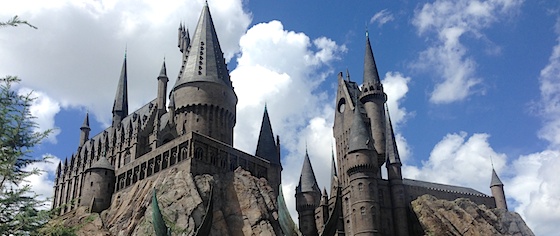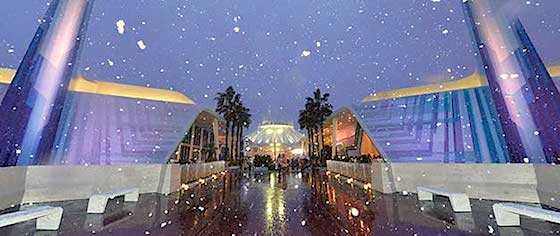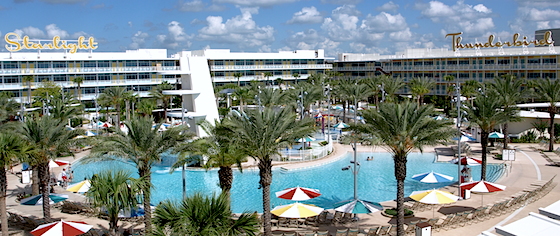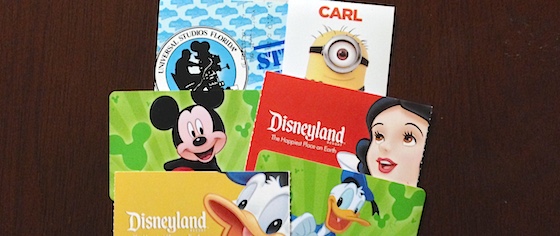Congratulations on starting an exciting part of your next theme park vacation — the planning! Smart planning now can help you save money on your trip… while giving you some fun stuff to dream about while you wait for your vacation time to arrive. Here is our best advice for planning a theme park vacation, along with links to some of our top articles about getting the most from your vacation.
Which Theme Park to Visit?

The Walt Disney World Resort in Orlando, Florida is the world’s most popular theme park resort. But it’s not the only option for a great family vacation. If you live closer to the west coast of the United States, you might consider the original Disneyland Resort in Anaheim, California. If anyone in your family is a fan of the Harry Potter books and movies, take a look at the Universal Orlando Resort — the home to the award-winning rides, restaurants and shops of theWizarding World of Harry Potter.
Families with elementary-aged children might like the Legoland theme parks, which promote more active play than some of the bigger theme parks. The Busch Gardens parks and Knott’s Berry Farm offer some nicely themed attractions at less cost than going to Disney or Universal. And if you’re a roller coaster fan, Cedar Point and the Six Flags parks should rank high on your “to-do” list.
When Should You Go?

The Disney and Universal parks are open year-’round, so if you can visit on a weekday during the school year, you’ll find smaller crowds and shorter lines that you’ll find during the busy traditional vacation periods. You might also find lower prices, too. In 2016, Walt Disney World, Disneyland, and Universal Studios Hollywood started charging different prices for one-day tickets based on the date of your visit.
Disney’s theme parks now have three price tiers:
- Value — Mostly weekdays during the school year
- Regular — Mostly weekends during the school year and summer weekdays
- Peak — Spring break, many summer weekends, and Christmas and other holiday weeks
Prices are highest and crowds largest during the peak season, and prices are lowest and crowds smallest during on value days. You can see which days fall into which categories on Walt Disney World’s ticket page and Disneyland’s ticket page.
Most people visit the Disney theme parks on multi-day tickets, which are the same price no matter when you visit. But the price per day of those tickets falls with the more days that you spend at the parks. So even if you are going to buy a multi-day ticket, take a look at Disney’s calendars to find the dates of an extended stay with the lowest crowd levels that will work for your family’s schedule. (The Walt Disney World calendar also gives you a good indication of how crowd levels will be at the neighboring Universal Orlando Resort, as well.)
Ultimately, we recommend that you not get too hung up on Disney’s new pricing tiers. Chances are, you will be buying a fixed-price, multi-day ticket anyway, and differences in hotel and transportation costs typically out-weigh any difference in one-day ticket prices even if you were buying them. Remember, it’s all about value. Go when is most convenient and comfortable for you.
- Disney Moves to Seasonal Pricing for Theme Park Tickets
- Our Free Disneyland Crowd Calendar and Day-Plan Advice
- When Are Dapper Day, Bat Day, Gay Days, and Other Unofficial Special Events at Disneyland?
- Universal Studios Hollywood Makes Date-Specific Ticket Prices Official
- What’s Under Construction at Top Theme Parks
Where to Stay?

Top theme park resorts offer official on-site hotels that deliver great perks for visitors, such as free parking and transportation to and from the airport (at Walt Disney World) or unlimited front-of-line access to rides and shows (at Universal Orlando). Staying on-site also puts you closer to the park and sometimes allows you early access before the park opens to the rest of the public in the morning.
Of course, the trade-off is higher prices. The lowest-cost options for a hotel room are always found off-site, so you’ll want to weigh the benefits of staying on-site with the extra cost to find the best value for you and your family.
Both Disney and Universal also offer dining plans as part of vacation packages for their hotel guests. That could make certain packages great deals for your family, but only if you take full advantage of the dining plan. If your family are light eaters who just snack during the day at the parks, you’d be wasting money choosing a vacation plan with a big dining plan that you won’t end up using.

Do not wait until you get to the park to buy your tickets. You’ll waste valuable time waiting in an unnecessary line, and you’ll rob yourself of the opportunity to shop around and find the best value for you and your family.
Always buy your theme park tickets in advance, either from the park’s official website or from an authorized reseller. (We have links below.) Never buy tickets second-hand, such as from Craigslist or eBay. Walt Disney World, Universal Orlando, and Disneyland all use finger scans or photographs to associate their tickets with specific users, so they cannot be resold or transferred to someone else. There is no way for you to see if a second-hand ticket is still valid, or if it’s been assigned to someone else.
At Walt Disney World and Disneyland you will have the option of buying “Park Hopper” tickets that allow you to visit all the parks at those resorts on the same day. (Walt Disney World has four theme parks and Disneyland has two.) Without the park hopper option, your ticket allows entry into only one of the resort’s parks per day. Universal Orlando, with two parks, offers the same option, except that it calls this option “Park-to-Park.”
Park hopper or Park-to-Park can be worth the upcharge at Disneyland and Universal Orlando, where the parks are within easy walking distance of each other. At Universal Orlando, you must upgrade to Park-to-Park tickets to ride the Harry Potter-themed Hogwarts Express train that runs between the two parks. At Walt Disney World, however, where the parks are located miles from one another, we recommend that first-time and budget-conscious visitors save a few dollars and skip the park hopper option, as there is plenty in each of the four parks there to fill a day, without wasting the time needed to travel between parks.
If you are thinking about a long visit, you might consider upgrading to an annual pass to get a better deal on theme park tickets. Annual passes often include extra benefits, such as in-park discounts on food and souvenirs, and even free parking. Depending upon the park, an annual pass can be a better deal than ever a two- or three-day ticket. (At Disney, it’s more like seven-to-eight days.)
You also should think about an annual pass if you are thinking about visiting multiple parks around the country in the same year, too. If you buy an annual pass at a Six Flags theme park, you can use it to get into any other Six Flags parks and enjoy the same benefits there. Disney, Cedar Fair (owner of Cedar Point, Knott’s Berry Farm, Kings Island and other parks), and Legoland also offer certain annual passes that are good at all of their parks in the United States.
Not only can you buy your tickets in advance, you can pay for your in-park and on-ride photos, too. Walt Disney World sells a “Memory Maker” package that includes all your family’s on-ride and in-park photos taken by Disney’s professional PhotoPass photographers during your visit. But if you bring your own camera (or cell phone) Disney’s photographers will happily take your photo on that, for free. In fact, employees at any park are happy to click your picture for you. There’s no need for a selfie stick! (Not that you could bring them into the park anymore — selfie sticks are now banned at almost all theme parks.)
Make Your Reservations in Advance
In 2013, Walt Disney World introduced a new ride reservation system, called Fastpass+, which allows ticket-holders to reserve ride times online before you visit. You can make advance reservations for up to three attractions — including character meet-and-greets, parades, and fireworks shows — for each day of your visit. Once you’ve bought your Disney tickets, you can make Fastpass+ reservations up to 30 days before your visit by clicking the “My Disney Experience” link on disneyworld.com. (People staying at Disney’s on-site hotels can book Fastpass+ times up to 60 days in advance of their trip.)
Disneyland and the other Disney theme parks continue to use the traditional Fastpass system, where you pick up reservations in the park on the day of your visit, with no advance reservations. Universal Orlando and other parks sell ticket options that allow you to skip the waits on certain attractions, but they, too, do not require advance reservations. You also can skip long waits by using single rider lines at some popular attractions.
As for meal times, we strongly recommend making reservations for sit-down restaurants at the Walt Disney World Resort as soon as you can. You can reserve a dining time at Walt Disney World’s table service restaurants 180 days before visit by calling +1-407-WDW-DINE or by visitingdisneyworld.com/dining.
Advance reservations are not as important at other parks, but having them means one less thing to worry about on the day of your visit. You can make advance dining reservations for Universal Orlando’s table service restaurants and character meals by calling +1-407-224-4233 between 8:30am-7pm Eastern Time. At Disneyland, call +1-714-781-DINE to make reservations for table service restaurants and Disney character breakfasts.
All top theme parks can accommodate people with food allergies or other dietary restrictions. Call the park’s restaurant reservation number in advance, or ask at the guest services office for help when you enter the park.
If you are visiting from outside the United States, you also should know that waiters in table-service restaurants should be tipped, as almost all of their pay comes from customer gratuities. Budget 15%-20% of your meal cost for tips, and remember that tips are no longer included in the cost of the Disney Dining Plan.
How to Stay Safe

Theme parks are among the safest places in the world… if you follow the rules. Your children might be familiar with the safe way to cross a street. But I doubt that their kindergarten teacher told them about the safe way to board a spinning teacup. Each ride will have posted safety instructions either at the entrance or in the line. Please wait to board a ride, or to get out of a ride vehicle, until you’ve been told it is the safe time to do so. Ride attendants are there to help, if needed.
Also drink plenty of water, wear sunblock, take frequent rest breaks and try to minimize your time in direct sunlight to keep yourself safe and healthy when visiting a theme park.
If you are visiting from outside the United States, know that America has no national health care system and that your health care coverage does not apply here, so you should look into buying short-term, traveler’s health insurance to cover you during your trip in case something major does happen.
But for minor illnesses and injuries, the theme parks have you covered. The first-aid station is marked on each park’s guidemap, which is available for free when you enter the park and next to the registers at any store in the park. If you ask park employees for directions to first aid, they likely will try to call a paramedic to assist you on the spot. If you are in relatively good shape, then, just use the map and find your way to first aid. But if you need immediate help, ask a park employee for assistance, then wait for help to come to you.
What are You Waiting to Plan Your Next Vacation?